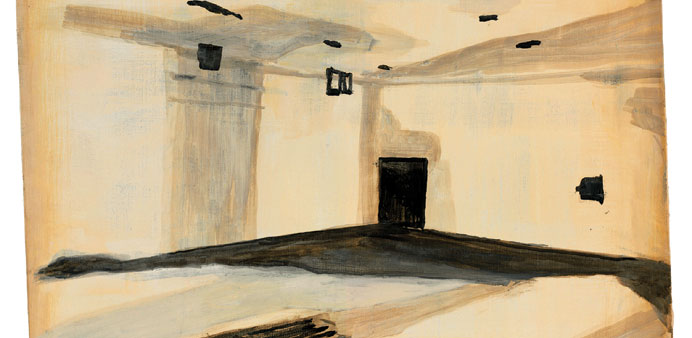By Anand Holla
Regarded as one of the most influential and significant contemporary painters working today, Belgian artist Luc Tuymans has been a key figure in the global modern art scene. A retrospective of the work of the much-celebrated figurative painter is likely to draw hordes in Doha, this month.
Starting October 18, Qatar Museums will present Tuymans’ first solo show in the Gulf. The exhibition “Intolerance”, a comprehensive survey of the artist’s work, will include a series of wall paintings and a new body of work, The Arena, created specifically for the show. The exhibition will be on till January 30, 2016, at Al Riwaq.
Lynne Cooke, Senior Curator of Special Projects in Modern Art at the National Gallery of Art Washington, who will be curating the show, said, “Spanning some 30 years, Tuymans’ exhibition Intolerance, speaks to certain abiding preoccupations the Belgian painter has long mined in counterpoint with a rapidly changing world.”
All along his career, Tuymans has used photographs as basis for his paintings; be it images of archive portraits of national socialists and Nazis or images of hospital patients. His diverse range of imagery defies categories, his portrayals underline subtext, and he has often been credited for having contributed to the revival of painting in the 1990s.
In a bio written on Tuymans, David Zwirner notes, “Quiet, restrained, and at times unsettling, his works engage equally with questions of history and its representation as with quotidian subject matter cast in unfamiliar and eerie light. Painted from pre-existing imagery, they often appear slightly out-of-focus and sparsely coloured, like third-degree abstractions from reality.”
Using a Polaroid camera or iPhone, Tuymans often uses images he has photographed himself, or picks visuals from TV or YouTube as source material for his paintings. His earlier works, however, were based on magazine pictures, drawings, and TV footage.
Tuymans’ subjects emerge from historical events such as Holocaust or the politics of the Belgian Congo, and even lighter stuff such as Christmas decorations and wallpaper patterns. “Tuymans’s paintings consciously fall desperately short of the iconic, becoming vestiges posed as counterfeit emblems for that which cannot be conveyed,” says another note on his work, “Exposing the gap between represented image and historical event, Tuymans’s paintings delve into the inner workings of how mythology is created.”
Born in 1958 in Mortsel, near Antwerp, Tuymans began studying fine art in 1976. He concentrated on painting but in the early 1980s he lost faith in the medium and gave up for two years, says a note on the artist on Tate’s website. “During this time, he worked as a filmmaker, and when he returned to painting in the mid-1980s, he introduced new techniques such as cropping, close-ups, framing and sequencing, which remain key elements of his work today,” the note says.
In the context of the new information age, many artists felt that painting was a deeply conservative form of expression which did not match the heterogeneous nature of contemporary experience, the note further points out. “Tuymans’ work specifically addresses the challenge of the inadequacy and ‘belatedness’, as he puts it, of painting,” it says.
Published to accompany the epic retrospective Intolerance in Doha, a publication of the same title offers new insights into Tuymans’ oeuvre from the last 25 years. Richly illustrated with more than 800 illustrations, studies, archival material and installation photographs of the main exhibitions in the artist’s career.
In an interview with Apollo magazine, Tuymans said most of his canvases are completed in a single day. “When I paint I don’t want to think any more. My intelligence shifts from my brain to my hand. It becomes an intense bodily act. When I close the door on my studio at the end of the day I have to be convinced that the painting has worked,” he said.

Gaskamer (Gas Chamber) 1986. Tuymans’ subjects emerge from historical events such as Holocaust or the politics of the Belgian Congo.


